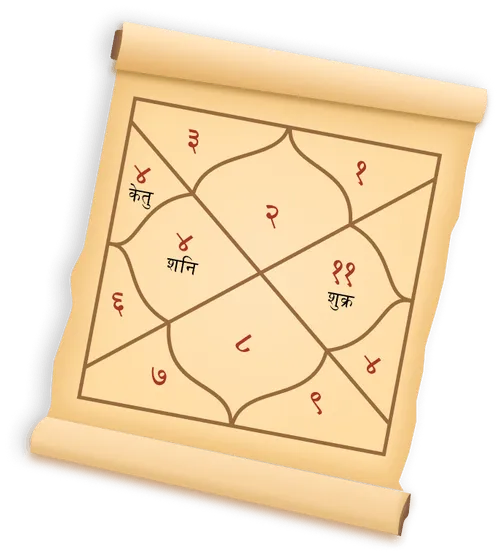One of the oldest methods to find a compatible partner in our country has been the Janam Kundali matching. In this process, astrologers check the horoscopes of two people and match their qualities to see how compatible they will be after marriage. In arranged marriages, it is a pretty common norm to go for Janam Kundali matching before marriage. And this percentage in our country is quite huge as most people do arrange marriages here. People who do even love marriages sometimes match their Janam Kundalis to be more than 100% sure.
The Kundali matching process is also known as the Ashtakoot process as it involves the matching of 36 qualities across eight Koots (categories). These categories are Varna, Vashya, Tara, Yoni, Gruha Maitri, Gana, Bhakoot and Nadi. Each Koot helps you get an idea about different aspects of life and has a definite score which sums up to 36. For example, Vasya koot enables you to determine mental compatibility whereas Nadi koot helps you know about the physical and psychological compatibility between two people.
In this article, we will discuss one of the most essential Koots in the Janam Kundali matching process – Vasya Koot. If you are going to marry soon, this read could be really helpful. Let’s go!
What exactly is Vasya Koot in the Janam Kundali Matching Process?
As we mentioned, there are a total of eight Koots. Vasya Koot is the second one in the Janam Kundali matching process. Even though the Vasya Koot holds a score of two out of a total of 36, it is significant in its own way. You must be wondering why?
Well, in the Janam kundali matching process, Vasya Koot helps you determine mental and power compatibility between two people. The meaning of the word ‘Vasya’ is the ability to dominate or influence the other person. As per the score after the matching, astrologers can tell who will be more dominating or influencing over the other person. Other than this, you can also predict the mental compatibility between the potential couple. So, even though it holds a score of two, it is of great importance.
The Vasya koot in the Janam Kundali matching process is further divided into five parts. They are as follows.
- Chatushpada
- Manava
- Jalachara
- Vanachara
- Keeta
The first part of Vasya Koot is the Chatushpada which means Quadrupeds. This includes people with the zodiac sign Aries, Taurus, 1st half of the Capricorn and 2nd half of Sagittarius. The second part is known as Manava which means Human and it includes people with the zodiac signs of Gemini, Virgo, Aquarius and the first half of Sagittarius. The next part of this Koot is Jalachar known as Water-dwellers which includes Cancer, Pisces and the 2nd half of Capricorn. The fourth part of the Vasya koot is Vanachara (wild beast) and it includes people with the Leo zodiac sign. The fifth and last part is Keeta (insects) and includes people with the Scorpio zodiac sign.
So, if two people fall in the same moon sign. They will get a maximum of two points and enjoy maximum compatibility. For example, if both people belong to the Chatushpada Vasya, they will get two points.
You also need to understand one important thing: the score alone in this category won’t define your overall compatibility. You just need to get a score above 18 across all eight categories to go ahead with the marriage. So, even if you get a zero in Vasya Koot, you don’t need to worry because there are seven other categories for you in the Janam Kundali match.
How to do Janam Kundali Matching Online?
Now that you understand what Vasya Koot is, you should also know how to do Janam kundali matching online. Well, it’s quite easy to do it. First of all, find a suitable platform to do the Kundali matching. Once you have that, you will only need to fill in a few details for yourself and your to-be partner – Name, Place, Date and Time of Birth.
As soon as you fill in these details. You will get a detailed Kundali matching report and a score out of 36. Based on that, you can decide whether to go ahead with the marriage or not.










